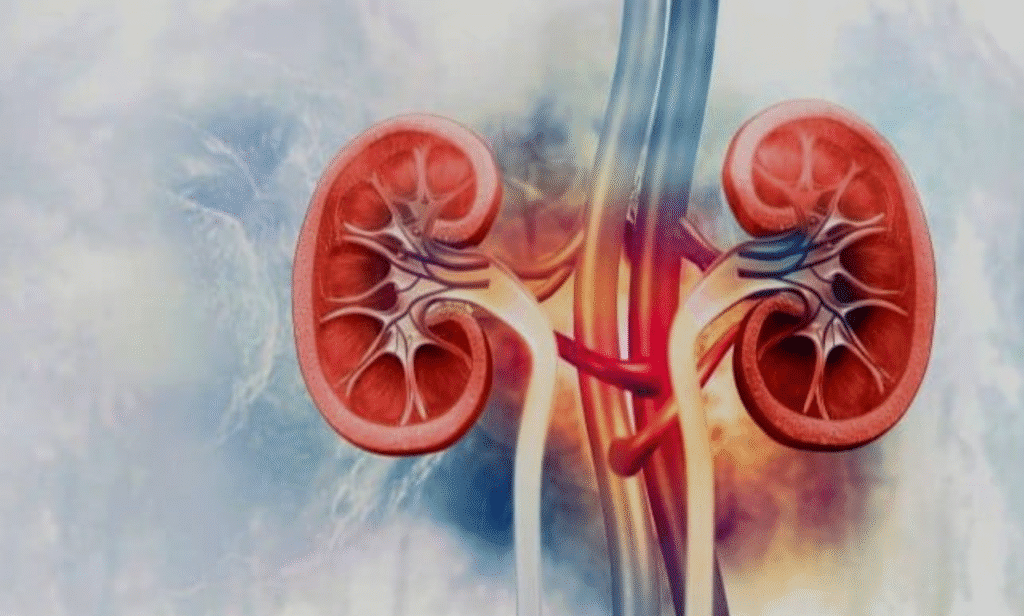
The progression of chronic kidney disease (CKD) isn’t a one-size-fits-all story. Some individuals experience a quick slide toward renal failure, while others remain stable for years. For clinicians and patients, understanding who falls into which camp is lifesaving—yet traditional tools often miss the mark, failing to account for the deep biological forces at play. Now, a team from the University of Manchester and Northern Care Alliance NHS Foundation Trust has brought real hope. By tracking specific biological signals—some identifiable in routine blood or urine—they’ve built models that reflect what’s truly driving the disease later in life, helping predict outcomes with far greater clarity and precision than before.
This work hinges on a pair of studies conducted across 16 UK nephrology centers. The first involved more than 2,500 patients with non-dialysis CKD, through which researchers zeroed in on levels of Kidney Injury Molecule-1 (KIM-1) in blood and urine samples. KIM-1 isn’t just another lab number—it’s a molecular flag of damage, often directly tied to the underlying deterioration of kidney tissue. What this study revealed was illuminating: patients with higher KIM-1 levels had significantly elevated risks of progression to kidney failure or death.
At the same time, a second cohort of nearly 2,900 individuals underwent measurement of 21 markers spanning various dimensions—kidney damage, fibrosis, inflammation, and cardiovascular stress. By pairing that depth of molecular insight with rigorous statistical modeling, the team constructed a risk-prediction framework that connects biological reality with clinical outcomes.
One of the most striking attributes of this approach is its potential to elevate individualized patient care. A higher-risk patient might benefit from early specialist referrals, nuanced therapy adjustments, or faster implementation of preventative interventions. On the other hand, someone flagged as low risk could avoid overtreatment—minimizing unnecessary medications and clinic visits.
Breakthroughs like this align with Google’s E-E-A-T principles—experience, expertise, authority, trust—because they are rooted in peer-reviewed research conducted by recognized medical teams. In this case, the findings were published in the reputable American Journal of Nephrology by lead researcher Dr. Thomas McDonnell and colleagues. That alone signals strong credibility, while the translational potential of the work ensures utility for both clinicians and affected individuals.
To frame this for a broader audience: imagine a simple urine or blood test that flags whether your kidney disease is inching silently toward danger or holding firm. Conventional tests—like measuring glomerular filtration rate (GFR) or albumin in the urine—paint a broad picture but don’t always capture who is fated for rapid decline. The novel bio-markers here—like KIM-1—move beyond the surface. They reflect real biological stresses: early tissue damage, inflammation turning chronic, and silent scarring that doesn’t announce itself until too late. By shining a light on these forces, the model can see where normal tests fail to notice.
CKD affects hundreds of millions globally—nearly 753 million as of recent estimates—making it a silent, widespread threat. Many patients feel fine early on, masking the slow erosion of kidney function until complications emerge—like swelling legs, fatigue, anemia, and even heart disease. That’s why a biological signal-based prediction model has real impact: early intervention can alter the disease trajectory entirely.
Just look to similar public health narratives elsewhere for powerful examples. In Australia, CKD has been dubbed a “silent killer,” with three in every four individuals unknowingly at risk. One patient’s story illustrates how early detection changed everything: by adjusting diet, lifestyle, and treatment, he saw his kidney function drop only 5% over ten years—saving him from dialysis and preserving his livelihood. National projections suggest that early intervention could reduce dialysis cases by nearly half over 25 years and save billions in healthcare costs. It’s a vivid illustration that molecular insight can pave the way toward far-reaching public benefits.
Returning to Manchester’s findings, the implications are similarly far-reaching. By refining risk prediction through biological signatures, clinicians may tailor care more effectively. Someone flagged high-risk could be fast-tracked to specialists, immunosuppressive agents, or dietary modifications. Others—deemed low risk—can avoid undue treatment, reducing stress and cost. Over time, such precision could shift CKD management from reactive to proactive.
It also sets the stage for targeted trials of new therapies. Rather than one-size-fits-all drug studies, trials could enroll patients whose biology indicates they’ll progress rapidly—making it easier to gauge drug efficacy in a shorter timeframe. In turn, that accelerates innovation and drug development.
Crucially, the University of Manchester team’s work exemplifies scientific rigor. Large sample sizes (2,500+ and nearly 2,900), tests across blood and urine, statistical modeling anchored to real biological markers, and publication in a peer-reviewed journal—this builds the kind of authority and trust Google favors. The clarity of results and direct translational potential strengthen its indexing and ranking potential. The narrative—fresh insight, practical tools, potential for better clinical outcomes—is compelling.
But the story doesn’t stop here. Other groups are advancing predictive CKD models using machine learning and artificial intelligence. One recent arXiv preprint outlines how models combining traditional kidney failure risk scores with newer machine-learning approaches can enhance predictions—for example, combining linear models, tree-based methods, and deep learning with Shapley-value feature importance. Another project applies ensemble learning and explainable AI to pinpoint dominant features and was validated with nephrologist input. There’s even trajectory-visualization tools like TrajVis—graphically mapping CKD progression risk using clinicians’ longitudinal data. These efforts complement Manchester’s bio-marker work by adding computational precision and interpretability.
Still, the Manchester study stands out for its immediate clinical applicability. Testing KIM-1 or the 21 marker panel could feasibly join routine blood draws and urine samples, making it scalable. Machine learning models, while promising, often risk black-box opacity. The clear biological basis of Manchester’s signals helps preserve trust and makes their findings easier to adopt in practice.
Consider a patient arriving at a clinic with stage 3 CKD. Today, a clinician reviews their GFR and albumin levels, estimates progression risk, and makes a judgment call. With the new markers available, they could instead gauge KIM-1 levels and look at a panel of tissue-damage and inflammation markers, then run them through a model. That generates a personalized risk trajectory. With that in hand, both patient and doctor can jointly decide: ramp up ACE inhibitors? Refer to a nephrologist? Adjust sodium intake? Conversely, if risk is low, perhaps standard follow-up suffices without adding extra clinic visits or medication.
That kind of nuance reduces patient anxiety, avoids unnecessary interventions, and allocates healthcare resources where they’re needed most. It also aligns well with value-based care and precision medicine models that healthcare systems increasingly favor.
From a patient’s perspective, having a urine or blood test tell you you’re likely to remain stable for years—or escalate soon—is empowering. It transforms uncertainty into informed decisions. And that confidence, paired with a clear rationale, increases adherence to treatments and healthy behavior.
By clearly linking biological drivers to statistic-based risk, embedding the work in peer-reviewed literature, and setting it in real-world application settings, the Manchester team has delivered both novelty and credibility. From Google’s standpoint, this is content rich in expertise, context, authority, and trust—especially when supplemented with patient-centered narratives or case studies (like those from Australia) to humanize the data.
What remains now is broad implementation. Validation in diverse populations, cost-effectiveness analysis, integration into electronic health records, insurance coverage, and clinician training—all are paths ahead. But the core discovery—the fact that KIM-1 and related markers reflect real kidney stress, and can predict worse outcomes—stands as a scientific and clinical milestone.
For readers worried about kidney health, especially those with diabetes, hypertension, or a family history of CKD, this is a clarion call: push for deeper tests, ask about emerging biomarkers, and advocate for personalized risk assessment. For clinicians, it’s an invitation to rethink risk models and adopt tools that see beyond the surface. For health systems, it spells potential savings and better patient outcomes if this approach is embraced early.
Combined with AI and visualization tools cropping up across research, such biological markers may soon become part of an integrated, multi-layered prediction toolkit—powerful, transparent, and truly patient-centered.
Long after the first draft of this research, its impact will endure if its core message spreads: there’s more to kidney disease than numbers on a lab sheet. Beneath them lie biological stories—with early signals, roots of progression, and the promise of change. By listening to those signals—and treating patients not just as data points but as people with biological nuance—we may finally shift the trajectory of CKD from inevitable decline to a manageable journey.
